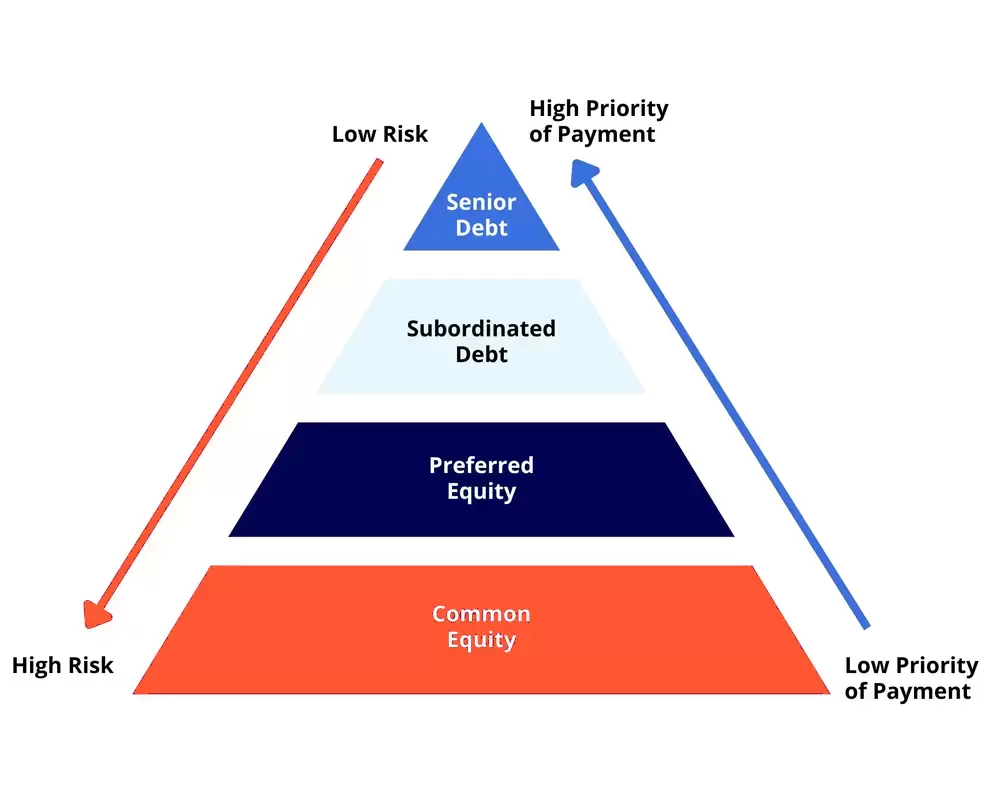Transparency Relationships Accommodate Meaningful


Subordinate debt is second-tier debt.
The subordinate lender has a second lien position, whereas the senior lender retains the right to the first lien position.
The first position has the right to remain whole, meaning that they’re entitled to repayment before the second-tier lender.
Senior lenders are typically asset-based, while subordinated lenders can be any type of financial institution.
Whether you’re a business owner, a private equity group, or a senior lender, subordinated debt financing is a powerful tool for accessing the capital necessary to complete transactions alongside a senior lender or to grow without having to pay off your senior lender.







Own a business or looking to acquire one? Leverage sub debt and set your plans into motion.
Explore the team and process that’s secured $2+ billion in financing.
A subordinated loan, also known as subordinated debt, junior debt, or junior security, is a form of borrowing where repayment is prioritized after the settlement of all primary loans, assuming there are sufficient remaining funds. In contrast, primary loans are classified as senior or unsubordinated debt, indicating their higher priority in repayment over subordinated loans.
Subordinated debt is a form of debt financing, meaning there is no equity transaction between the borrower and the subordinate lender. The financing doesn’t dilute stockholder value.
Senior debt describes the funds the tier 1 lender provides in the transaction. The senior lender usually enters the equation before the subordinate lender, and the senior lender’s debt is paid before the subordinated debt in a default situation.
The main difference between the two is the priority in which each lender is repaid during a default or liquidation event. Debt with a higher priority over other forms of debt is always considered the “senior debt” in that scenario.
Debt is listed as a liability on any balance sheet. The order is as follows:
Subordinated funds won’t decrease the business’s equity, so there’s no dilution of ownership.
Subordinated debt is broken down into various types, ranked in order of repayment priority: high-yield bonds are at the top, followed by mezzanine debt (both with and without warrants), Payment in Kind (PIK) notes, vendor notes, and other debt obligations. A subordination scale can also depict this hierarchy, where high-yield bonds are the least subordinated, and vendor notes have the highest subordination.
Mezzanine debt is a hybrid form of financing that sits between secured senior debt and company equity in the capital structure. It’s subordinate to senior debt, entailing more risk but offering greater potential returns. Mezzanine financing often blends debt and equity characteristics with regular interest payments and an option to convert into equity under certain conditions.
Asset-backed securities frequently feature subordinated tranches, which rank lower in priority compared to senior tranches. These securities are financial instruments supported by asset pools, like loans, leases, credit card debts, royalties, or receivables. Tranching these assets divides risks and characteristics, attracting a wider investor base due to differentiated risk profiles.
Subordinated debt offers an avenue to expand capital facilities without refinancing or taking out a new loan entirely. Since it’s subordinated, it won’t interfere with collateralized assets or senior facilities.
It allows for overadvances when senior lenders are unwilling to do so. For ABL and factorers, it offers a fast and efficient way to cover clients’ capital gaps and manage balance sheets.
Although subordinated debt often comes with higher interest rates, the benefits often outweigh the cost. Given the current interest rate environment, subordinated debt often presents a comparatively affordable option for capital funding.
The predominant form of mezzanine debt is unsecured, subordinated debt, making them fundamentally similar in nature. However, the principal distinction lies in the fact that mezzanine debt typically involves debt paired with equity participation, a feature not commonly associated with subordinated debt.
Mezzanine debt can contain covenants, warrants, and other stipulations that can suddenly surprise business owners with a loss of ownership. For this reason, it’s recommended to explore alternative options to mezz debt before finalizing a contract.
© 2024 TRAM Funding. All Rights Reserved.